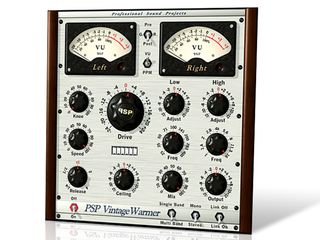

The UA plug-in also added some coloration, making the sound more beefy and sustained, which I also liked. The stereo width and definition was a tad better with the oversampled plug-in but I kind of fancy the coloration of the transients in the non-oversampled plug-in, because it somehow suited the acoustic guitar. I wanted to use the auto-release to tighten up the sound without squashing it too much, and it worked very well on this stereo-dubbed acoustic guitar. Be careful to not push the meters into the red as it will crush transients and introduce unwanted distortion.Personally I've never quite fancied using the auto-release setting on a compressor, but when the compressor is good enough it can lend you a helping hand when mixing. The ATR-102 offers a different flavor, boosting the highs, creating a more defined sense of space, and helping in raising the RMS of a mix. You’ll also find it works well on sub-auxes and the master bus. The Studer A800 offers more of a warm, vintage tone, and I often use it on individual tracks that need to be prominently featured in the mix. I’ve never heard a plugin do what these do. I consider this another masterful job from UAD modeling classic and sought-after hardware.

Or sometimes just use it on the vocal aux to gently compress the sibilant 7-9k range. I’ll set my threshold so that the material is rarely subject to significant gain reduction, and use another limiter such as the FabFilter Pro-L to do the heavy lifting.īecause it’s multiband, I can use it to compress problem areas like low-mids. The 元-LL offers a similar hype as the famous (and perhaps overused L2) but in a multiband compressor format. I wouldn’t call it transparent as it adds impact, a clearer sense of space and a bit of brightness to most sources, but it certainly won’t negatively alter the dynamics and balance of a mix when used correctly. When used on the master bus, reducing only about 1.5 dB and with a fast release, it offers an overall boost in RMS without introducing pumping and other negative artifacts. I recently demoed this plugin (which models the Neve classic) and found it does something that very few other plugin compressors can do. Here are several tips, and five plugins (and in some cases, their hardware counterparts) that, if used properly, can help increase the perceived loudness of your mixes.ĭisclaimer: The key to making the most of these tips is thoroughly understanding the difference between Peak and RMS.Īdditionally, I have recently switched from sending all tracks directly to the master bus to first through a series of sub-auxes which include drums and bass, all other instrument and vocals. I’d connect my iPod to different sound systems and A/B only to find my mixes pale in comparison to professionally engineered productions in terms of volume, presence and impact. When I was a younger audio engineer I always found myself frustrated when comparing my final mixes to commercial releases.


 0 kommentar(er)
0 kommentar(er)
